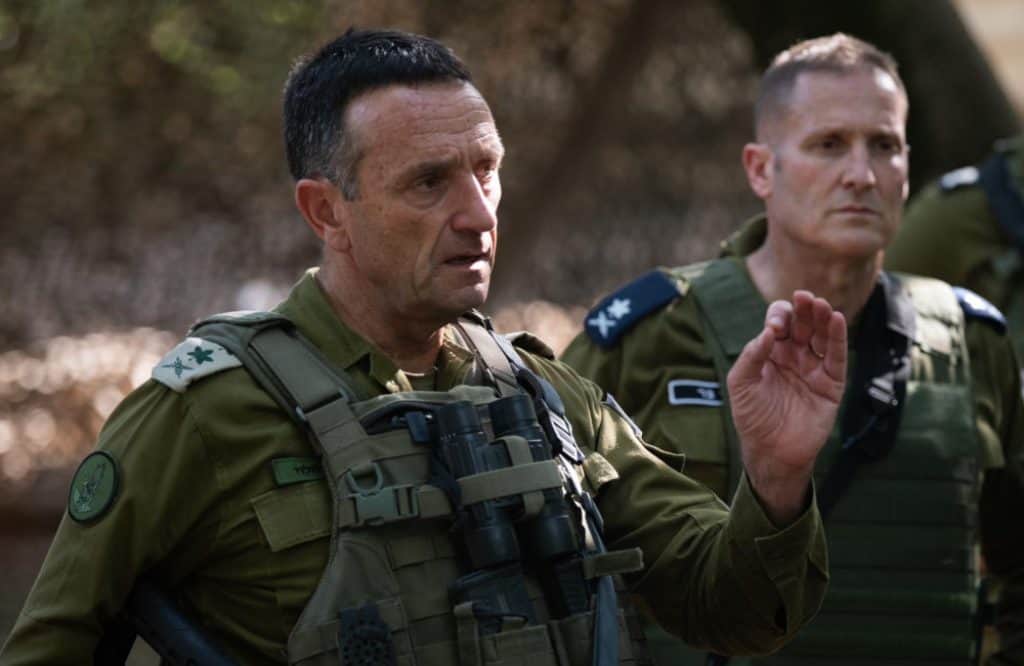
Israeli-Hezbollah tensions increased on June 18 and June 19 as Hezbollah heightened its rhetoric warning of war. Israeli defense officials traveled to northern Israel for an assessment and key discussions about the situation.
The Iranian-backed Lebanese terrorist group Hezbollah released drone footage on June 18 that was taken over the coast of Israel. The footage depicted several sites along the coast, including an area housing Rafael Advanced Defense Systems, one of Israel’s largest defense companies, and the port of Haifa, home to an Israeli naval base. The Hezbollah footage, which was edited and marked with locations by Hezbollah, claimed to show locations of air defense systems and other sites within the Rafael property.
On June 19, Hezbollah leader Hassan Nasrallah gave a speech in which he threatened Cyprus against letting Israel use its airbases. “Opening Cypriot airports and bases to the Israeli enemy to target Lebanon would mean that the Cypriot government is part of the war, and the resistance will deal with it as part of the war,” Nasrallah said.
Nasrallah’s speech came a week after the IDF killed Sami Taleb Abdullah, the commander of Hezbollah’s Nasr unit, in an airstrike. Hezbollah has fired more than 5,000 rockets, missiles, and drones at Israel since Hezbollah chose to support Hamas after the latter group’s October 7 attack on Israel. Hezbollah increased its attacks in May and June, especially the use of precision kamikaze drone attacks.
After the killing of Abdullah, Hezbollah greatly increased its attacks, firing at least 215 projectiles at Israel. There was a lull as US envoy Amos Hochstein visited Israel on June 17, but the attacks resumed after Hochstein left the country.
Now, Israel and Hezbollah are upping the rhetoric about a possible war.
“Nasrallah boasts today about filming the ports of Haifa, operated by international companies from China and India, and threatens to attack them,” Israeli Foreign Minister Israel Katz said on June 18. “We are very close to the moment of decision to change the rules against Hezbollah and Lebanon. In an all-out war, Hezbollah will be destroyed, and Lebanon will be severely hit.”
Defense Minister Yoav Gallant, IDF Chief of Staff Lieutenant General Herzi Halevi, and the head of the Israeli Air Force, Major General Tomer Bar, met on June 19 about the situation in the north. They convened a discussion and assessment with the head of Israel’s Northern Command, Major General Ori Gordin. The head of Israel’s Home Front Command, Major General Rafi Milo, was also present.
In addition, Halevi, Bar, and Brigadier General Gilad Biran, the head of Israel’s air defenses, visited an air defense battery and spoke with soldiers manning the site. “Our test is to see that today we defend, tomorrow we win, and the day after tomorrow we return the residents to a much safer reality, and with them, we also build and restore and make this beautiful area stronger than it was before the war,” Halevi said.
The northern meetings came a day after Gordin approved operational plans and held a joint situational assessment in the Northern Command.
“As part of the situational assessment, operational plans for an offensive in Lebanon were approved and validated, and decisions were taken on the continuation of increasing the readiness of troops in the field,” the IDF said on June 18. The feverish pace of the meetings illustrates the rising concerns in Israel about a further escalation in the north.
On June 19, sirens sounded throughout Israeli communities in Galilee, beginning in the morning and continuing throughout the day. The first alarms at 7:34 am were due to a drone threat, and the UAV fell near the northern Israeli border community of Metula. It was not clear if it was shot down by Israeli air defenses.
Some alarms were false, however. At least eighteen communities, from the city of Kiryat Shmona in the Huleh Valley to the community of Shlomi near the Mediterranean, were affected by the warnings. Fifteen rockets were fired at Kiryat Shmona, and Israel responded with artillery fire directed at the source of the attack.
The IDF also carried out overnight airstrikes in Lebanon between June 18 and June 19. Warplanes struck a Hezbollah storage facility near Yaroun and a launch post in the area of Ayta ash Shab. Ayta ash Shab has been a frequent IDF target due to Hezbollah’s presence in the village, which is very close to the Israeli border.







